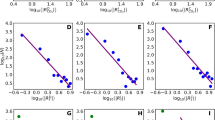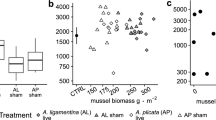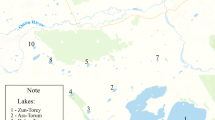Abstract
I provide a conceptual landscape of attributes of phytoplankton related to trophic gradients, by reviewing 69 papers and books on eutrophication, with special reference to the ecology of the phytoplankton. Forty-eight ecological variables such as total phosphorus and Chl-a, are used, each related to the trophic gradient measured. They are subdivided in structural features of the phytoplankton, functional or dynamic features, and other relevant properties of the plankton community. Only twelve of the forty-eight variables are statistically related to trophic gradient. In most cases, variability across a trophic gradient is only nominally described. Less attention is given to functional, structural or dynamic variables. Some associations occur because the variables are interrelated, for example, photosynthesis and Chl-a, or because the mathematical comparison is between a whole factor and a part of it. Many important environmental features which trigger or affect phytoplankton behaviour are independent of trophic state. Therefore, trophic states might be viewed as a multi-dimensional space, the axes of which are defined by the various independent variables, and not merely a simple gradient of fertility. The alternative approaches to the search for pattern are either the single global pattern (which seeks to explain the ecological behaviour of phytoplankton in all freshwater systems) or multiple local patterns (where only a small set of specific variables is solved for each question and system). If the ultimate goal is a paradigm of phytoplankton dynamics, biomass models, and tools for the prediction of species composition, phytoplankton ecologists should adopt the theories of nonlinear dynamic complex systems.
Similar content being viewed by others
References
Alvarez-Cobelas, M. & B. Jacobsen, 1992. Hypertrophic phytoplankton: an overview. Freshwat. Forum 2: 184–199.
Alvarez-Cobelas, M. & C. Rojo, 1994a. Spatial, seasonal and long-term variability of phytoplankton photosynthesis in lakes. J. Plankton Res. 16: 1691–1716.
Alvarez-Cobelas, M. & C. Rojo, 1994b. Factors influencing the share of planktic diatoms in lakes. Arch. Hydrobiol. Algol. Stud. 74: 73–104.
Anon, 1990. Toxic blue green algae. National Rivers Authority, Peterborough, England, 128 pp.
Arnqvist, G. & D. Wooster, 1995. Meta-analysis: synthesizing research findings in ecology and evolution. TREE 10: 236–240.
Baines, S & M. L. Pace, 1994. Relationships between suspended particulate matter and sinking flux along a trophic gradient and implications for the fate of planktonic primary production. Can. J. Fish. Aquat. Sci. 51: 25–36.
Baines, S. B., M. L. Pace & D. M. Karl, 1994. Why does the relationship between sinking flux and planktonic primary production differ between lakes and oceans? Limnol. Oceanogr. 39: 213– 226.
Bloesch, J. & U. Uehlinger, 1990. Epilimnetic carbon flux turnover of different particle size classes in oligo-mesotrophic Lake Lucerne, Switzerland. Arch. Hydrobiol. 118: 403–419.
Blomqvist, P., A. Pettersson & P. Hyenstrand, 1994. Ammonium-nitrogen: A key regulatory factor causing dominance of nonnitrogen-fixing cyanobacteria in aquatic systems. Arch. Hydrobiol. 132: 141–164.
Canfield, D. E., E. Philips & C. M. Duarte, 1989. Factors influencing the abundance of blue-green algae in Florida Lakes. Can. J. Fish. Aquat. Sci. 46: 1232–1237.
Carlson, R. E., 1977. A trophic state index for lakes. Limnol. Oceanogr. 22: 361–369.
Carney, H. J. & J. J. Elser, 1990. Strength of zooplanktonphytoplankton coupling in relation to lake trophic state. In M. M. Tilzer & C. Serruya (eds), Large Lakes. Springer, Berlin: 615–631.
Carpenter, S. R., K. L. Cottingham & D. E. Schindler, 1992. Biotic feedbacks in lake phosphorus cycles. TREE 7: 332–335.
Carpenter, S. R. & J. F. Kitchell (eds), 1993. The trophic cascade in lakes. Cambridge University Press, Cambridge, 383 pp.
Carrillo, P., I. Reche, P. Sanchez-Castillo & L. Cruz-Pizarro, 1995. Direct and indirect effects of grazing on the phytoplankton seasonal succession in an oligotrophic lake. J. Plankton Res. 17: 1363–1379.
Chow-Fraser, P., D. O. Trew, D. Findlay & M. Stainton, 1994. A test of hypotheses to explain the sigmoidal relationship between total phosphorus and Chlorophyll a concentrations in Canadian lakes. Can. J. Fish. Aquat. Sci. 51: 2052–2065.
De Angelis, D. L., 1992. Dynamics of nutrient cycling and food webs. Chapman & Hall, 270 pp.
Dillon P. J. & F. H. Rigler, 1974. The phosphorus-chlorophyll relationship in lakes. Limnol. Oceanogr. 19: 767–773.
Dillon, P. J., K.H. Nicholls, B.A. Locke, E. de Grosbois & N. D. Yan, 1988. Phosphorus-phytoplankton relationships in nutrient-poor soft-water lakes in Canada. Verh. int. Ver. Limnol. 23: 258–264.
Elser, J. J., H. J. Carney & C. R. Goldman, 1990.The zooplanktonphytoplankton interface in lakes of contrasting trophic status: an experimental comparison. Hydrobiologia 200/201: 69–82.
Elser, J. J. & N. B. George, 1993. The stoichiometry of N and P in the pelagic zone of Castle Lake, California. J. Plankton Res. 15: 977–992.
Findlay, D. L. & S. E. M. Kasian, 1987. Phytoplankton community responses to nutrient addition in Lake 226, Experimental Lakes Area, Northwestern Ontario. Can. J. Fish. Aquat. Sci. 44: 35–46.
Gaedke, U.& A. Schweizer, 1993. The first decade of oligotrophication in Lake Constance. I. The response of phytoplankton biomass and cell size. Oecologia 93: 268–275.
George, D. G. & D. H. Jones, 1987. Catchment effects on the horizontal distribution of phytoplankton in five of Scotland's largest freshwater lochs. J. Ecol. 75: 43–59.
Gliwicz, Z. M., 1975. Effect of zooplankton grazing on photosynthetic activity and composition of phytoplankton. Verh. int. Ver. Limnol. 19: 1490–1497.
Golterman, H. L., 1988. Chlorophyll-Phosphate relationships, a tool for water management. In F. E. Round (ed.), Algae and the aquatic environment. Biopress Ltd., Bristol: 205–224.
Harper, D., 1992. Eutrophication of freshwaters. Chapman & Hall. London, 327 pp.
Harris, G. P., 1986. Phytoplankton ecology. Structure, function and fluctuation. Chapman and Hall, London, 384 pp.
Harris, G. P., 1994. Pattern, process and prediction in aquatic ecology. A limnological view of some general ecological problems. Freshwat. Biol. 32: 143–160.
Hutchinson, G. E., 1961. The paradox of the plankton. Am. Nat. 95: 137–145.
Kalff, J., 1991. The utility of latitude and other environmental factors as predictors of nutrients, biomass and production in lakes worldwide: problems and alternatives. Verh. int. Ver. Limnol. 24: 1235–1239.
Kalff, J. & R. Knoechel, 1978. Phytoplankton and their dynamics in oligotrophic and eutrophic lakes. Ann. Rev. Ecol. Syst. 9: 475– 495.
Kalff, J. & S. Watson, 1986. Phytoplankton and its dynamics in two tropical lakes: a tropical and temperate zone comparison. Hydrobiologia 138: 161–176.
Levins, R., 1984. The strategy of model building in population biology. In E. Sobe (ed.), Conceptual Issues in Evolutionary Biology. The MIT Press, Cambridge: 18–27.
Lund, J. W. G., 1964. Primary production and periodicity of phytoplankton. Verh. int. Ver. Limnol. 15: 37–56.
Makulla, A. & U. Sommer, 1993. Relationships between resource ratios and phytoplankton species composition during spring in five north German lakes. Limnol. Oceanogr. 38: 846–856.
Marshall, C. T. & R. H. Peters, 1989. General patterns in the seasonal development of chlorophyll a for temperate lakes. Limnol. Oceanogr. 34: 856–867.
McCauley, E. & J. Kalff, 1981. Empirical relationships between phytoplankton and zooplankton biomass in lakes. Can. J. Fish. Aquat. Sci. 38: 458–463.
Moss, B., 1973. The influence of environmental factors on the distribution of freshwater algae: an experimental study. IV. Growth of test species in natural lake waters and conclusions. J. Ecol. 61: 193–211.
Moss, B., 1980. Ecology of fresh waters. Blackwell Scientific Publications. Oxford, 332 pp.
Munawar, M. & I. F. Munawar, 1986. The seasonality of phytoplankton in the North American Great Lakes, a comparative synthesis. Hydrobiologia 138: 85–115.
Odum, E. P., 1985. Trends expected in stressed ecosystems. BioScience 35: 419–422.
OECD, 1982. Eutrophication of waters. Monitoring, assessment and control. OECD, Paris, 153 pp.
Pahl-Wostl, C., 1995. The dynamic nature of ecosystems. Chaos and order entwined. John Wiley & Sons, Chichester, 267 pp.
Pimm, S. L., 1991. The balance of nature? University of Chicago Press, Chicago, Illinois, 434 pp.
Prairie, Y. T., C. M. Duarte & J. Kalff, 1989. Unifying nutrientchlorophyll relationships in lakes. Can. J. Fish. Aquat. Sci. 46: 1176–1182.
Rawson, D. S., 1956. Algal indicators of trophic lake types. Limnol. Oceanogr. 1: 18–25.
Reynolds, C. S., 1980. Phytoplankton assemblages and their periodicity in stratifying lake systems. Holarctic Ecol. 3: 141–159.
Reynolds, C. S., 1984a. Phytoplankton periodicity: the interactions of form, function and environmental variability. Freshwat. Biol. 14: 111–142.
Reynolds, C. S., 1984b. The ecology of freshwater phytoplankton. Cambridge Univ. Press, New York, 384 pp.
Reynolds, C. S., 1988. Functional morphology and the adaptative strategies of freshwater phytoplankton. In C. D. Sandgren (ed.), Growth and reproductive strategies of freshwater phytoplankton. Cambridge University Press, Cambridge: 388–433.
Reynolds, C. S., 1992. Eutrophication and the management of planktonic algae: what Vollenweider couldn't tell us. In D.W. Sutcliffe & J. G. Jones (eds), Eutrophication: research and application to water supply. Freshwater Biological Association, Ambleside: 4–29.
Reynolds, C. S. & E. G. Bellinger, 1992. Patterns of abundance and dominance of the phytoplanton of Rostherne Mere, England: evidence from an 18year data set. Aquat. Sci. 54: 1015–1621.
Rott, E., 1981. Some results from phytoplankton counting intercalibrations. Schweiz. Z. Hydrol. 43: 34–62.
Sas, H. (ed.), 1989. Lake restoration by reduction of nutrient loading. Academia Verlag, Sankt Agustin, 497 pp.
Scheffer, M., S. M. Hosper, M. L. Meijer, B. Moss & E. Jeppesen, 1993. Alternative equilibria in shallow lakes. TREE 8: 275–278.
Schindler, D.W., 1990. Experimental perturbations of whole lakes as test of hypotheses concerning ecosystem structure and function. Oikos 57: 25–41.
Schindler, D.W. & E. J. Fee, 1974. Experimental lakes area: whole-lake experiments in eutrophication. J. Fish. Res. Bd Can. 31: 937–953.
Seip, K. L., H. Sas & S. Vermij, 1992. Changes in Secchi disk depth with eutrophication. Arch. Hydrobiol. 124: 149–165.
Seip, K. L. & C. S. Reynolds, 1995. Phytoplankton functional attributes along trophic gradient and season. Limnol. Oceanogr. 40: 589–597.
Smith, V. H., 1979. Nutrient dependence of primary productivity in lakes. Limnol.Oceanogr. 24: 1051–1064.
Smith, V. H., 1985. Predictive models for the biomass of blue-green algae in lakes. Water resour. Bull. 21: 433–439.
Smith, V. H., 1986. Light and nutrient effects on the relative biomass of blue-green algae in lake phytoplankton. Can. J. Fish. Aquat. Sci. 43: 148–153.
Smith, V. H., 1990. Phytoplankton responses to eutrophication in inland waters. In I. Akatsuka (ed.), Introduction to Applied Phycology. Academic Publishing, The Hague: 231–249.
Smith, V. H., E. Willén & B. Karlsson, 1987. Predicting the summer peak biomass of four species of blue-green algae (Cyanophyta/Cyanobacteria) in Swedish lakes. Water resour. Bull. 23: 397– 402.
Sommer, U., 1986. The periodicity of phytoplankton in Lake Constance (Bodensee) in comparison to other deep lakes of central Europe. Hydrobiologia 138: 1–7.
Sommer, U, U. Gaedke & A. Schweizer, 1993. The first decade of oligotrophication of Lake Constance. II. The response of phytoplankton taxonomic composition. Oecologia 93: 276–284.
Sprules, W. C., J. M. Casselman & B. J. Shuter, 1983. Size distribution of pelagic particles in lakes. Can. J. Fish. Aquat. Sci. 40: 1761–1769.
Sprules, W. G. & M. Munawar, 1986. Plankton size spectra in relation to ecosystem productivity, size, and perturbation. Can. J. Fish. Aquat. Sci. 43: 1789–1794.
Steinberg, C. E. W. & H. M. Hartmann, 1988. Planktonic bloomforming Cyanobacteria and the eutrophication of lakes and rivers. Freshwat. Biol. 20: 279–287.
Stockner, J. G., 1991. Autotrophic picoplankton in freshwater ecosystems: the viewfrom the summit. Int. Revue ges. Hydrobiol. 76: 483–492.
Takamura, N. & Y. Nojiri, 1994. Picoplankton biomass in relation to lake trophic state and the TN:TP ratio of lake water in Japan. J. Phycol. 30: 439–444.
Tilman, D., 1982. Resource competition and community structure. Princeton Univ. Press, Princeton, 296 pp.
Trifonova, I. S., 1988. Oligotrophic-eutrophic succession of lake phytoplankton. In F. E. Round (ed.), Algae and the aquatic environment. Biopress Ltd., Bristol: 107–124.
Trifonova, I. S., 1989. Changes in community structure and productivity of phytoplankton as indicators of lake and reservoir eutrophication. Arch. Hydrobiol. Beih. 33: 363–371.
Tsuda, R., M. Kumagai & Y. Kakui, 1992. Spatial changes of phytoplanktonic size spectra in Lake Biwa. Hydrobiologia 243/244: 137–140.
von Pavoni, M., 1963. Die Bedeutung des Nannoplanktons im Vergleich zum Netzplankton. Schweiz. Z. Hydrol. 25: 219–341.
Watson, S., E. McCauley & J. A. Downing, 1992. Sigmoid relatioships between Phophorus, Algal Biomass, and Algal Community Structure. Can. J. Fish. Aquat. Sci. 49: 2605–2610.
White, E., G. Payne & S. Pickmere, 1988. A limitation to the usefulness of chlorophyll as a biomass indicator in eutrophication studies. Verh. int. Ver. Limnol. 23: 598–601.
Rights and permissions
About this article
Cite this article
Rojo, C. Differential attributes of phytoplankton across the trophic gradient: a conceptual landscape with gaps. Hydrobiologia 369, 1–9 (1998). https://doi.org/10.1023/A:1017066330953
Issue Date:
DOI: https://doi.org/10.1023/A:1017066330953




